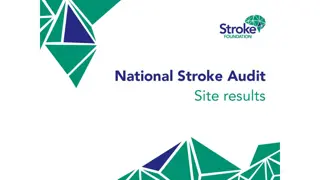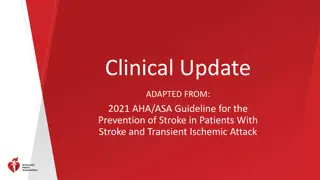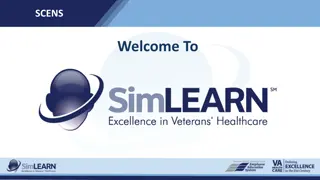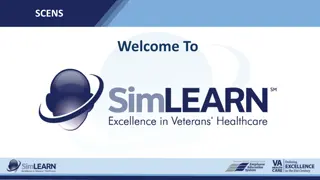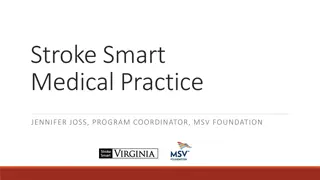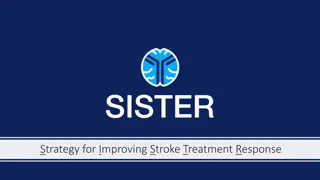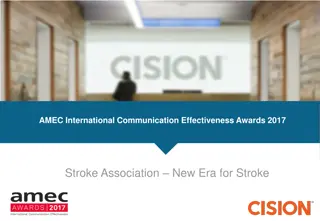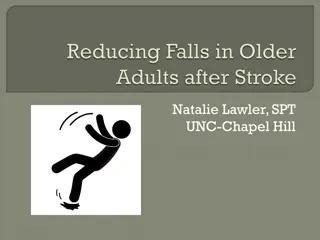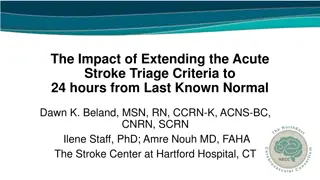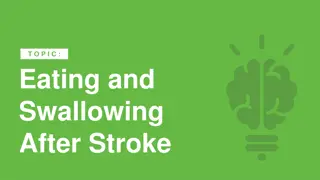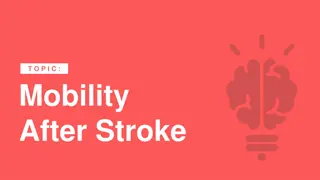Treatment Strategies for Hemorrhagic Stroke: Goals and Management
Short-term goals for treating hemorrhagic stroke involve rapid neurointensive care to maintain adequate oxygenation, breathing, and circulation, along with managing increased intracranial pressure and blood pressure. Long-term management focuses on preventing complications, recurrent bleeding, delayed cerebral ischemia, and long-term disability. Management of acute hemorrhagic stroke includes neurointensive care treatment and prevention of complications, with emphasis on controlling blood pressure, preventing re-bleeding, and managing deep vein thrombosis. Other treatments may include oral nimodipine for subarachnoid hemorrhage and hemostatic therapy with recombinant factor VIIa.
Download Presentation

Please find below an Image/Link to download the presentation.
The content on the website is provided AS IS for your information and personal use only. It may not be sold, licensed, or shared on other websites without obtaining consent from the author. Download presentation by click this link. If you encounter any issues during the download, it is possible that the publisher has removed the file from their server.
E N D
Presentation Transcript
HEMORRHAGI C STROKE DONE BY Assist. Lect. Shaymaa Hasan Abbas
DESIRED TREATMENT OUTCOMES The short-term goals for the treatment of hemorrhagic stroke include rapid neurointensive care treatment to maintain adequate oxygenation, breathing, and circulation. Management of increased intracranial pressure and blood pressure (BP) are important in the acute setting.
DESIRED TREATMENT OUTCOMES Long-term management includes prevention of complications and prevention of a recurrent bleed and delayed cerebral ischemia. Prevention of long-term disability and death related to them stroke are important regardless of the type of stroke.
TREATMENT OF ACUTE HEMORRHAGIC STROKE There is no proven treatment for intracerebral hemorrhage. Management is based on neurointensive care treatment and prevention of complications. Treatment should be provided to manage the needs of the critically ill patient including management of increased intracranial pressure, seizures, infections, and prevention of re-bleeding and delayed cerebral ischemia
TREATMENT OF ACUTE HEMORRHAGIC STROKE Blood pressure is often elevated after hemorrhagic stroke and appropriate management is important to prevent re- bleeding and expansion of the hematoma. Blood pressure can be controlled with IV boluses of labetalol 10 to 80 mg every 10 minutes up to a maximum of 300 mg or with IV infusions of labetalol (0.5 to 2 mg/minute) or nicardipine (5 to 15 mg/hour).
TREATMENT OF ACUTE HEMORRHAGIC STROKE Deep vein thrombosis prophylaxis with intermittent compression stockings should be implemented early after admission.
TREATMENT OF ACUTE HEMORRHAGIC STROKE Oral nimodipine is recommended in subarachnoid hemorrhage to prevent delayed cerebral ischemia. Delayed cerebral ischemia occurs 4 to 14 days after the initial aneurysm rupture and is a common cause of neurologic deficits and death.
TREATMENT OF ACUTE HEMORRHAGIC STROKE Hemostatic Therapy: Recombinant factor VIIa has been shown to have a benefit in the treatment of ICH.
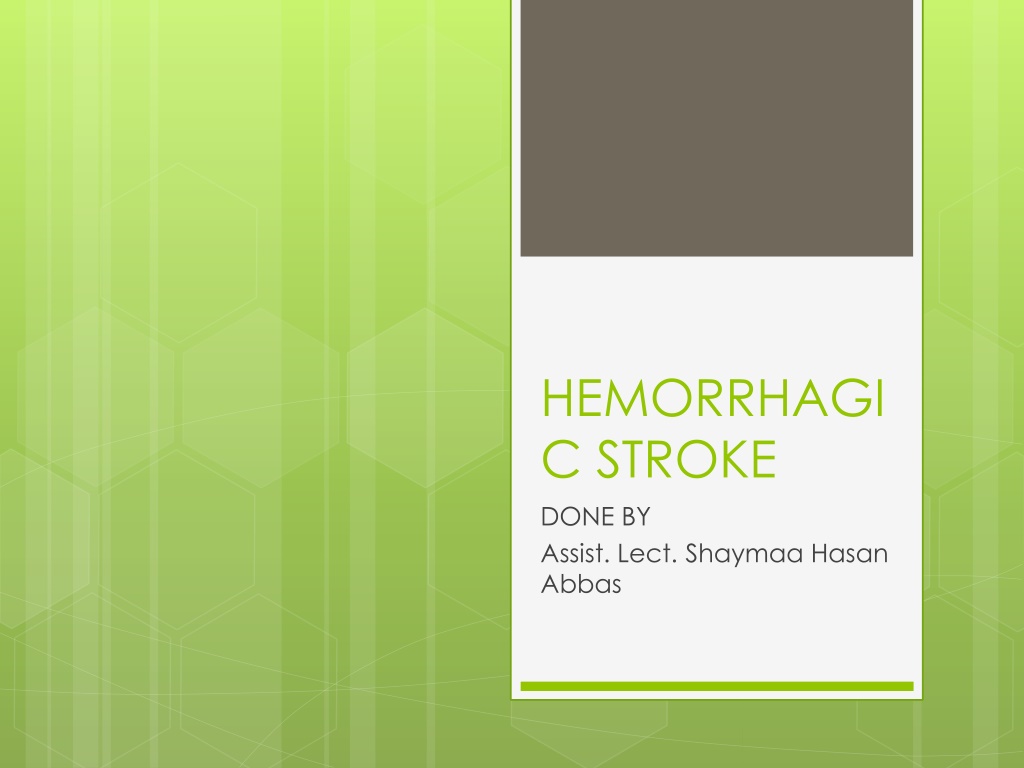
 undefined
undefined














